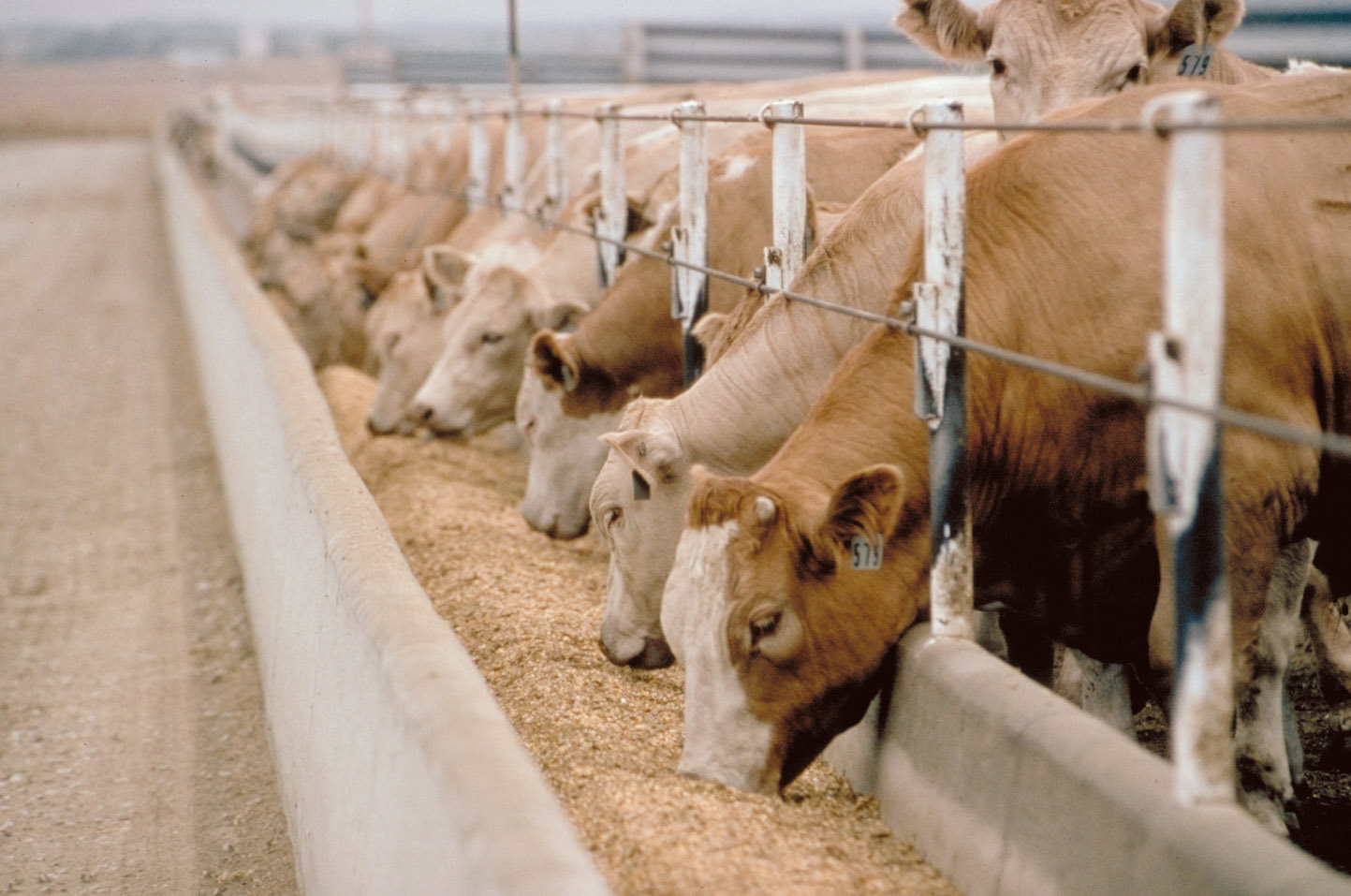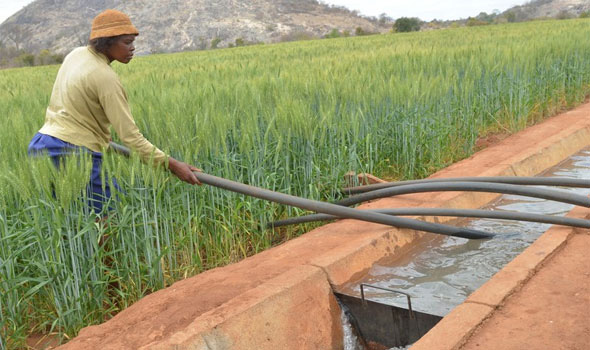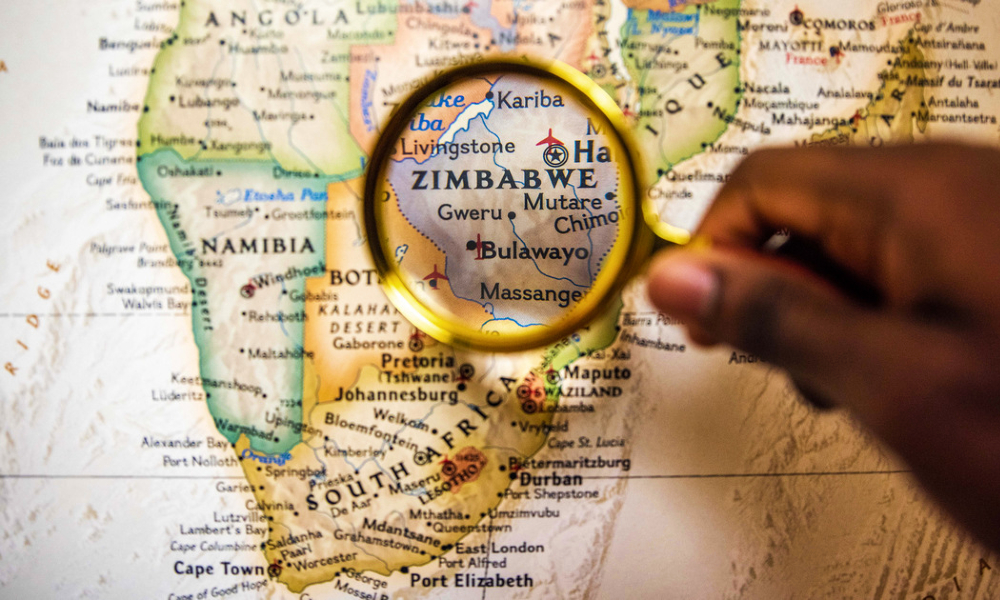Zim: From landlocked to land-linked
“From landlocked to land-linked” is a phrase used to describe the transformation of a region or country that does not have direct access to the ocean into a more interconnected and economically vibrant area by improving its connections with neighbouring countries or regions.
The idea is to shift the perspective from viewing the lack of coastline as a limitation to recognising the potential of leveraging strategic location, infrastructure development, and regional partnerships to enhance trade, transport, and economic opportunities.
This concept has been particularly emphasized in regions like Central Asia, where countries without direct access to sea routes have worked to develop road, rail, and air links with neighbouring nations to facilitate trade and access to global markets. The goal is to turn geographic challenges into opportunities by focusing on regional integration and cooperation.
Traffic at Zimbabwe’s border posts, particularly at Beitbridge, remains congested, with heavy traffic reported regularly. Despite significant improvements in infrastructure and processing times due to recent upgrades, the border post continues to experience high volumes of traffic, especially during peak travel periods.
At Beitbridge, the busiest border crossing in Southern Africa, delays are still common, particularly for commercial vehicles. While the time required for trucks to clear the border has decreased significantly — from days to just a few hours — long queues, sometimes stretching over a kilometre, can still occur due to the sheer volume of vehicles. Passenger vehicles and pedestrians generally experience shorter wait times, often crossing within half an hour.
Efforts are ongoing to further improve efficiency, with plans for a one-stop border post that would streamline procedures even more, potentially reducing congestion further once fully operational. If you’re planning to cross, it’s advisable to check for real-time updates and consider the timing of your journey to avoid peak congestion periods.
Zimbabwe relies on several key routes for the transportation of goods in and out of the country, connecting it to neighbouring countries and major ports. These routes are crucial for trade, especially given Zimbabwe’s landlocked status.
The main routes include:
Beitbridge Border (South Africa) —North-South Corridor
Route: Harare to Beitbridge, and then onward to Durban or Johannesburg, South Africa. This is the most heavily used route, facilitating the majority of Zimbabwe’s imports and exports. The corridor is vital for access to the Port of Durban, one of the largest and busiest ports in Africa.
Chirundu Border (Zambia) — Beira Corridor
Route: Harare to Chirundu, continuing through Zambia to the ports of Beira in Mozambique. This route connects Zimbabwe to the Port of Beira, providing an alternative to South African ports and reducing dependence on routes that go through South Africa. It’s particularly important for imports and exports with destinations in East Africa.
Plumtree Border (Botswana) — Trans-Kalahari Corridor
Route: Harare to Bulawayo, then onward to the Plumtree border with Botswana. This corridor connects Zimbabwe to Namibia’s Port of Walvis Bay through Botswana. It is used for goods destined for or coming from the southern and western regions of Africa.
Forbes Border (Mozambique) — Beira Corridor
Route: Mutare to Forbes Border, then through Mozambique to Beira. This is another key route to the Port of Beira, facilitating trade between Zimbabwe and countries in the Indian Ocean region.
Kazungula Border (Botswana/Zambia) — North-South Corridor
Route: Victoria Falls to Kazungula, then either north into Zambia or west into Botswana. This route serves as a connection to the broader Southern African Development Community (SADC) region and is particularly strategic for trade with Zambia and the DRC.
Nyamapanda Border (Mozambique) — Tete Corridor
Route: Harare to Nyamapanda, then into Mozambique’s Tete Province. This corridor is key for trade between Zimbabwe and Malawi, as well as northern Mozambique. It also provides access to the Nacala Port in Mozambique.
These routes are supported by Zimbabwe’s road and rail networks, which connect the country’s major economic hubs to these key border posts. The improvement of infrastructure along these routes, such as the modernisation of border posts and road upgrades, has been crucial in enhancing trade efficiency and reducing transportation costs.
The revitalisation of Zimbabwe’s railway lines is a significant component of the country’s broader efforts to improve its infrastructure and enhance economic growth.
The railway network, operated by the National Railways of Zimbabwe (NRZ), has faced severe challenges over the years, including aging infrastructure, financial difficulties, and competition from road transport. However, recent initiatives have aimed at reversing this decline.
Key aspects of the revitalisation
- Public-Private Partnerships (PPPs) In an effort to inject much-needed capital and expertise into the NRZ, the Zimbabwean government has pursued public-private partnerships. One notable example is the deal with the Diaspora Infrastructure Development Group (DIDG) and Transnet, a South African rail company, initially valued at $400 million. Although the deal faced challenges and was eventually cancelled, it highlighted the government’s commitment to exploring PPPs as a means to revive the rail sector.
- Infrastructure rehabilitation
The NRZ has undertaken various projects to rehabilitate its infrastructure. This includes refurbishing old locomotives, wagons, and rail tracks. Significant investments have been directed toward upgrading key corridors that connect Zimbabwe to regional trade routes, such as the Beitbridge-Bulawayo and Harare-Mutare lines. These improvements are crucial for restoring the railways’ competitiveness, especially in the freight sector.
- Regional connectivity
Zimbabwe’s rail network plays a critical role in regional trade, linking the country to ports in South Africa, Mozambique, and Tanzania. The revitalisation efforts include plans to improve cross-border connections and enhance the efficiency of rail services, which are essential for the export and import of goods. The modernisation of border posts like Beitbridge and the ongoing talks about establishing one-stop border posts are aligned with this goal.
- Financial and technical support Zimbabwe has sought financial and technical assistance from international partners, including China and Russia. For instance, China has been involved in upgrading certain sections of the rail network, supplying new equipment and technology to the NRZ.
- Impact on mining and agriculture
The revitalisation of the railway lines is expected to have a positive impact on key sectors like mining and agriculture. Efficient rail services are crucial for transporting bulk commodities, such as minerals and agricultural products, to ports for export. Improved rail infrastructure could reduce transportation costs and increase the competitiveness of Zimbabwean exports.
Challenges and future outlook
Despite these efforts, challenges remain. The financial instability of the NRZ, coupled with the need for more comprehensive investment, continues to hinder progress. Additionally, the competition from road transport, which has grown significantly due to the decline of rail services, poses a challenge to the NRZ’s revival.
However, if the ongoing initiatives are successfully implemented, Zimbabwe’s railway system could see a significant turnaround, contributing to the country’s economic recovery and regional trade integration.
The revitalisation of Zimbabwe’s railway lines is a complex but essential endeavour, with the potential to transform the country’s transport infrastructure and boost economic development. Continued investment, effective management, and regional cooperation will be key to the success of these efforts.
Zimbabwe’s pipeline infrastructure is a crucial component of the country’s energy and fuel supply system, primarily focused on the transportation of petroleum products. The most significant pipeline is the Feruka Pipeline, which connects the Feruka Oil Refinery near Mutare in eastern Zimbabwe to the Msasa fuel depot in Harare.
Key aspects of Zimbabwe’s pipeline infrastructure
- Feruka pipeline
Route and capacity: The Feruka pipeline runs from Beira in Mozambique to the Feruka Oil Refinery and then to Harare. It has been a lifeline for Zimbabwe, enabling the import of refined petroleum products. The pipeline has a capacity to transport over 130 million litres of fuel per month.
Importance: This pipeline is critical because it reduces reliance on road and rail transport for fuel, which is more expensive and less efficient. The pipeline ensures a steady supply of fuel to the country, which is essential for both domestic consumption and industrial use.
- Upgrades and maintenance Over the years, there have been efforts to maintain and upgrade the Feruka pipeline to prevent disruptions in fuel supply. The government has periodically engaged in repairs and technological upgrades to ensure the pipeline remains operational. However, challenges like aging infrastructure and financial constraints have occasionally affected the pipeline’s efficiency.
- Expansion plans There have been discussions about expanding the pipeline infrastructure to increase capacity and enhance the security of fuel supplies. This includes potential plans to upgrade the Feruka pipeline and possibly construct new pipelines to diversify fuel transport routes. However, these plans have faced delays due to financial and logistical challenges.
- Mozambique partnership The pipeline is part of a bilateral agreement with Mozambique, which allows Zimbabwe to import fuel from the port city of Beira. This relationship is vital for Zimbabwe’s energy security, making the maintenance of good relations with Mozambique essential for the continued operation of the pipeline.
- Challenges and strategic importance
Despite its importance, the pipeline infrastructure faces several challenges, including frequent breakdowns, vandalism, and the need for modernisation. Additionally, Zimbabwe’s broader economic difficulties have sometimes impeded necessary investments in pipeline infrastructure. Strategically, the pipeline remains critical for Zimbabwe’s energy sector, reducing the costs associated with importing fuel and providing a more reliable supply chain than alternative transportation methods.
Future prospects
The future of pipeline infrastructure in Zimbabwe likely hinges on continued investment and regional cooperation. Upgrading the Feruka pipeline and exploring new pipeline projects could help to secure the country’s fuel supply and support economic growth. However, these efforts will require significant capital and international partnerships, which are essential for overcoming the technical and financial challenges involved.
In summary, while the current pipeline infrastructure is crucial for Zimbabwe’s fuel supply, there is a clear need for investment and modernization to ensure it continues to meet the country’s needs efficiently and securely.
Growth potential as a nation
Zimbabwe’s growth potential in terms of trade and its trading routes is considerable, especially if strategic investments and reforms are implemented. This potential is driven by several factors, including the country’s geographic position, ongoing infrastructure improvements, regional integration efforts, and the diversification of its economy.
1.Strategic geographic location
Zimbabwe is centrally located in Southern Africa, providing a natural transit hub for trade between the northern and southern parts of the continent. The country’s borders with Mozambique, South Africa, Botswana, and Zambia enable it to serve as a gateway for regional trade, especially through key routes that connect to major ports in Mozambique (Beira and Maputo) and South Africa (Durban).
- Infrastructure improvements Recent and ongoing improvements in infrastructure, such as the modernisation of the Beitbridge border post and the rehabilitation of major highways, enhance Zimbabwe’s attractiveness as a trade route. Upgrades to rail and road networks are vital for reducing transportation costs and improving the efficiency of moving goods across the region.
Additionally, the revitalisation of the rail system and pipeline infrastructure is expected to support increased trade volumes by offering more efficient transport options for bulk goods, including minerals and agricultural products.
- Regional integration
and trade agreements:
Zimbabwe is a member of several regional organisations, including the Southern African Development Community (SADC) and the Common Market for Eastern and Southern Africa
(COMESA). These memberships provide access to larger markets and facilitate trade through reduced tariffs and harmonised regulations.
The African Continental Free Trade Area (AfCFTA), which Zimbabwe is a part of, further enhances the country’s potential by opening up access to a market of over 1,2 billion people. This agreement could significantly boost intra-African trade, benefiting Zimbabwe by increasing its export opportunities and attracting foreign investment.
- Diversification of the economy
Zimbabwe’s economy, traditionally reliant on agriculture and mining, is gradually diversifying. Growth in sectors such as manufacturing, tourism, and services creates additional trade opportunities. By expanding its export base beyond raw materials to include manufactured goods and services, Zimbabwe can tap into new markets and reduce its vulnerability to commodity price fluctuations.
- Development of new trade corridors There are ongoing discussions about developing new trade corridors and improving existing ones to better integrate Zimbabwe into regional and global supply chains. This includes potential new routes that could connect Zimbabwe more efficiently to ports in Namibia (Walvis Bay) and Tanzania (Dar es Salaam), reducing dependence on traditional routes through South Africa and Mozambique.
The development of the “One-Stop Border Post” concept, which has already been implemented at some crossings, could further streamline trade by reducing delays and simplifying customs procedures.
While the potential for growth is significant, Zimbabwe faces several challenges that need to be addressed to fully realise this potential:
Political and economic stability: Consistent political and economic policies are essential to attract investment and maintain investor confidence.
Infrastructure funding: Significant capital is required to continue upgrading and expanding infrastructure. Public-private partnerships and international financial support will be crucial.
Corruption and bureaucracy: Addressing corruption and streamlining bureaucratic processes is vital to improving the business environment and reducing trade costs.
In conclusion, the growth potential for Zimbabwe’s trading routes is strong, underpinned by its strategic location, ongoing infrastructure improvements, regional integration, and economic diversification efforts.
If the country can address its challenges and maintain a stable policy environment, it is well-positioned to become a major trade hub in Southern Africa, significantly boosting its economic prospects and contributing to regional growth. Zimbabwe’s trade involves a variety of goods and commodities, reflecting its diverse economy. The country imports and exports a wide range of products, with key sectors including mining, agriculture, and manufacturing.
Zimbabwe’s top export commodity is gold, contributing significantly to the national income. The country is one of Africa’s largest gold producers.
Platinum Group Metals (PGMs): Zimbabwe is the third-largest producer of platinum globally, and PGMs (including platinum, palladium, and rhodium) are a major export. Diamonds: The country exports rough diamonds, primarily from the Marange fields.
Nickel: Zimbabwe exports nickel in various forms, including matte and semi-processed ores. Chrome: As one of the world’s largest producers of chrome ore, Zimbabwe exports this mineral for use in stainless steel production.
Tobacco: Zimbabwe is a leading exporter of tobacco, particularly Virginia tobacco, which is prized globally. Cotton: The country exports raw cotton and cotton lint, used in the textile industry.
Sugar: Sugar production is significant, with exports mainly going to regional markets. Tea and Coffee: Though on a smaller scale, Zimbabwe exports tea and coffee, particularly to Europe and Asia. Maize: Occasionally, surplus maize is exported, though the country also imports maize during times of shortage.
- Manufactured goods
Textiles and clothing: Zimbabwe exports garments and textiles, though this sector has declined over the years.
Processed foods: Zimbabwe exports various processed agricultural products, such as canned fruits, vegetables, and jams.
Key imports
- Petroleum products
Zimbabwe imports large quantities of fuel, including diesel, petrol, and kerosene, primarily through the Feruka pipeline from Mozambique.
- Machinery and equipment
The country imports industrial machinery, agricultural equipment, and vehicles. This includes mining equipment, tractors, and construction machinery.
- Chemicals and fertilisers Chemicals used in mining, agriculture, and manufacturing are significant imports. Fertilisers are particularly important for the agricultural sector.
4.Food products
Zimbabwe imports food items such as wheat, rice, cooking oil, and maize, particularly during times of drought or poor harvests.
- Electrical and electronic equipment
Consumer electronics, electrical machinery, and components are major imports, reflecting demand in both the consumer market and industrial sectors.
- Pharmaceuticals
The country imports a large portion of its pharmaceuticals, including medicines, vaccines, and medical equipment.
Zimbabwe’s imports and exports are primarily transported through a combination of road, rail, and pipeline infrastructure. Key trade routes include:
Beitbridge Border Post: The main gateway for goods traveling between Zimbabwe and South Africa, crucial for both imports and exports.
Forbes Border Post: Facilitates trade with Mozambique, particularly important for fuel imports through the Feruka pipeline and
Improving the transportation of commodities in Zimbabwe requires a comprehensive approach that addresses infrastructure, regulatory frameworks, technology adoption, and regional cooperation. Here are key measures that could be implemented:
- Infrastructure development and maintenance
Road and Rail Upgrades: Prioritise the rehabilitation and expansion of the road and rail networks. Many of Zimbabwe’s roads and railways are in poor condition, leading to delays and higher transportation costs. Continued investment in these areas, particularly in key trade corridors, is essential.
Example: Expanding and modernising the Beitbridge-Harare-Chirundu highway, a major trade route, would significantly enhance the efficiency of transporting goods across the country and beyond.
Pipeline expansion: Expand and upgrade existing pipeline infrastructure, such as the Feruka pipeline, to ensure a reliable supply of petroleum products. This can reduce dependency on road transport, which is costlier and less efficient.
- Improvement of
border post efficiency
Modernisation of border facilities: Implement further modernisation at major border posts like Beitbridge, Forbes, and Chirundu. The introduction of electronic customs clearance systems, improved infrastructure, and streamlined procedures can significantly reduce delays and costs associated with cross-border trade.
One-Stop Border Posts (OSBPs): Expand the OSBP concept to other major border crossings, where all customs, immigration, and health checks are conducted jointly by the neighbouring countries. This reduces the number of stops and the time trucks spend at boarders.
- Adoption of technology
Digital Logistics Platforms: Encourage the adoption of digital platforms for logistics management. These platforms can improve the coordination of freight movements, reduce downtime, and optimise route planning.
Real-Time tracking: Implement systems for real-time tracking of goods in transit, which can improve security, reduce theft, and ensure timely deliveries.
- Regulatory and
policy reforms
Harmonisation of regional trade policies: Work with neighbouring countries and regional bodies like SADC and COMESA to harmonise trade regulations, customs procedures, and standards. This can reduce non-tariff barriers and improve the flow of goods across borders.
Incentivising private investment: Offer tax incentives, subsidies, or public-private partnerships to attract investment in the logistics and transport sectors. This can include financing for fleet modernisation or investment in logistics hubs.
- Capacity building
and training
Training for transport operators: Invest in training programmes for truck drivers, customs officials, and logistics managers to ensure they are well-versed in modern logistics practices and cross-border trade regulations.
Improved safety standards: Enhance road and rail safety standards, including regular maintenance checks and adherence to international safety protocols. This can reduce accidents and improve the reliability of transportation services.
- Development of inland dry ports and logistics hubs
Inland dry ports: Establish inland dry ports or logistics hubs in key locations like Harare and Bulawayo. These hubs can serve as consolidation and distribution points, reducing congestion at border posts and seaports.
Logistics hubs: Encourage the development of logistics hubs that can support warehousing, cold storage, and efficient distribution, particularly for agricultural products and perishable goods.
- Fostering regional cooperation:
Regional transport corridors: Collaborate with neighbouring countries to develop and enhance regional transport corridors, such as the North-South Corridor, which links Zimbabwe to the ports of Durban and Dar es Salaam. This can facilitate smoother and more efficient trade routes across multiple countries.
8.Joint infrastructure projects
Engage in joint infrastructure projects with neighbouring countries, such as shared railway lines, road networks, and pipeline projects, to reduce costs and improve connectivity.
In conclusion, by focusing on these key areas, Zimbabwe can significantly enhance the efficiency and reliability of its transportation system, reducing costs, improving trade competitiveness, and supporting economic growth. These measures will help Zimbabwe maximise its potential as a regional trade hub, leveraging its strategic location and improving access to both domestic and international markets.
Dr Keen Mhlanga is an Investment Advisor with high skills in Finance. He is the executive chairperson of FinKing Financial Advisory. Send your feedback to keenmhlanga@gmail.com, contact him on 0777597526.-ebsinessweekl










